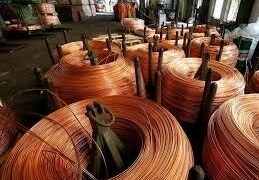CHICAGO: US wheat futures fell to their lowest in nearly three weeks on Tuesday, pressured by light export demand as well as some forecasts for rain in the southern U.S. Plains traders said.
Soybean futures also were trading in negative territory, their fifth straight day of declines, on expectations that the pace of planting in the U.S. Midwest will quickly increase as temperatures warm in the coming days.
The weather outlook also hampered corn futures, which were trading close to unchanged.
The U.S. Agriculture Department on Monday afternoon said that 5 percent of the U.S. corn crop was planted as of Sunday, well behind the five-year average and lagging market expectations. Soybean planting was 2 percent complete.
“Slower-than-expected U.S. plantings were mostly shrugged off by the trade, with better action ahead in the coming days & weeks,” said Matt Zeller, director of market information at INTL FCStone. “A seasonally-unusual amount of attention is on the demand side at this point, with U.S. bean exports struggling.”
At 10:09 a.m. CDT (1509 GMT), Chicago Board of Trade soybean futures for May delivery were down 2-1/4 cents at $10.18-1/2 a bushel. Declines were kept in check by technical buying when the contract hit its 100-day moving average.
Concerns about exports continued to cast a pall over the soybean market despite the USDA’s announcement that private exporters reported the sale of 130,000 tonnes of soybeans to Argentina on Thursday morning.
But soybean sales to China have dried up, with no deals announced in two weeks, amid escalations in a trade row.
“There is uncertainty about China’s soybean imports after anti-dumping action on sorghum,” said an India-based agricultural commodities analyst.
CBOT May corn was flat at $3.78-1/2 a bushel. CBOT May wheat was 3-1/2 cents lower at $4.58 a bushel, on track for its third straight day of declines. The May wheat contract hit its lowest since April 4.
The USDA said on Monday afternoon that 31 percent of the U.S. wheat crop was in good-to-excellent condition, lower than analyst forecasts.
Source: Brecorder



























